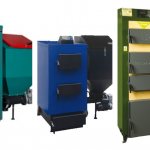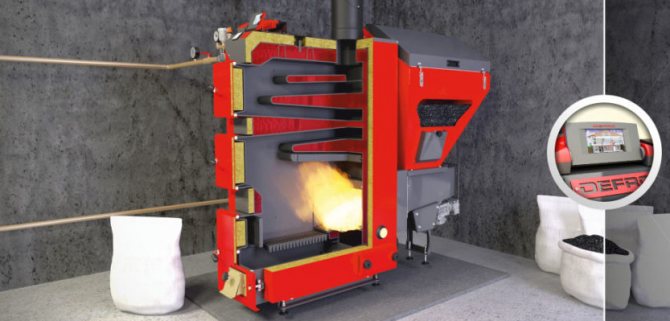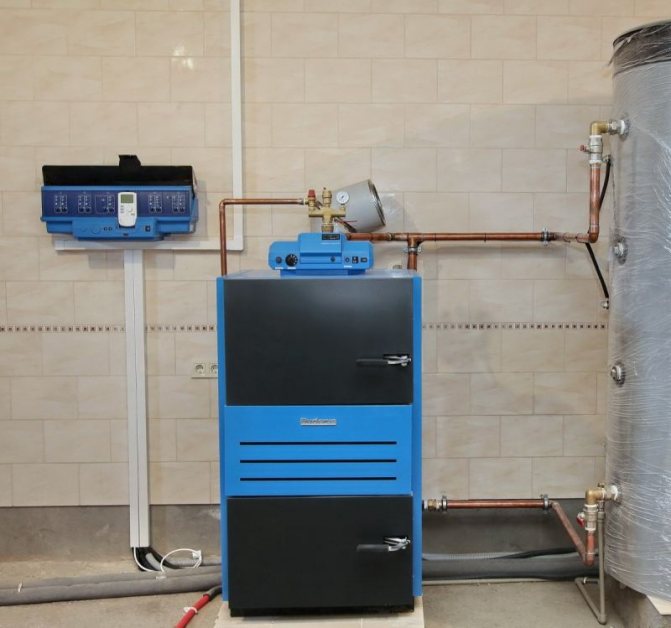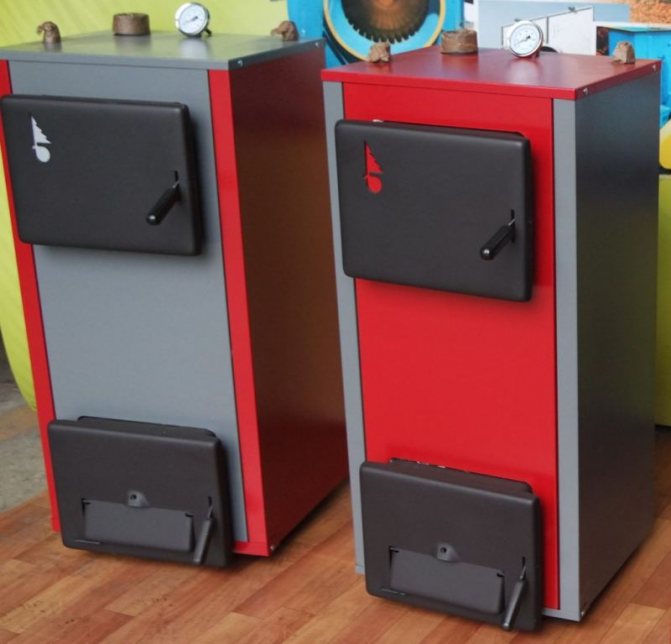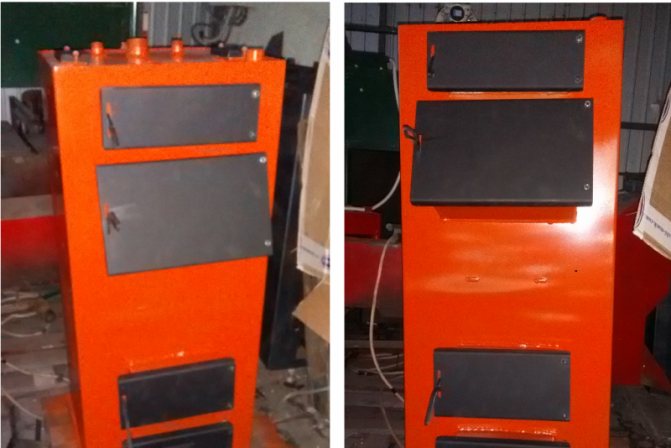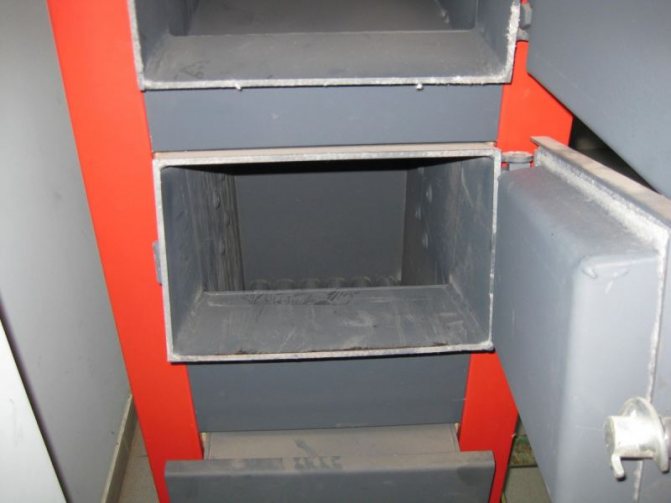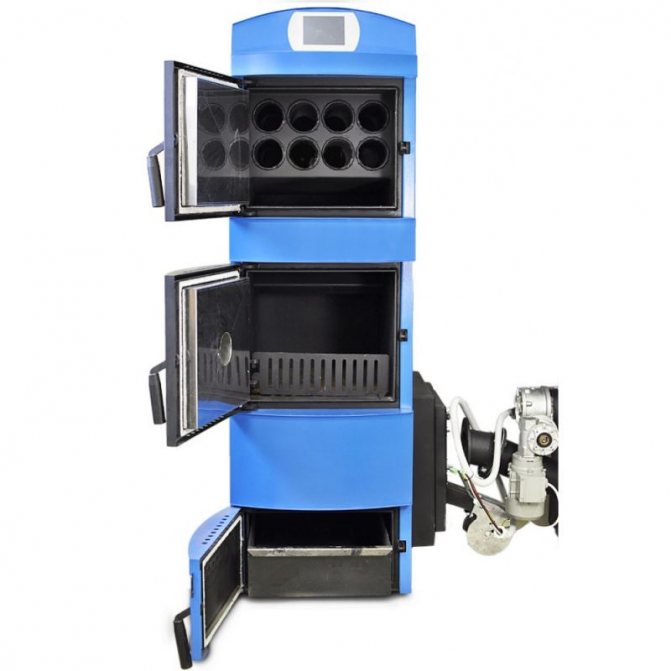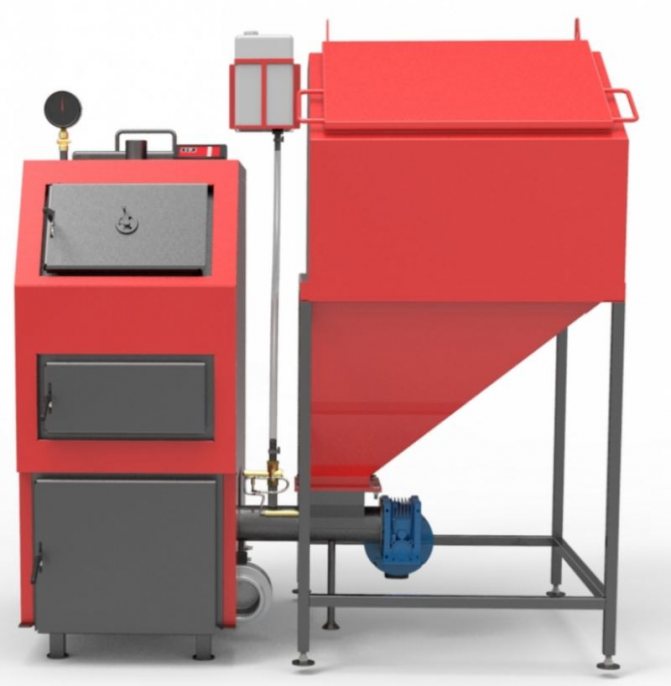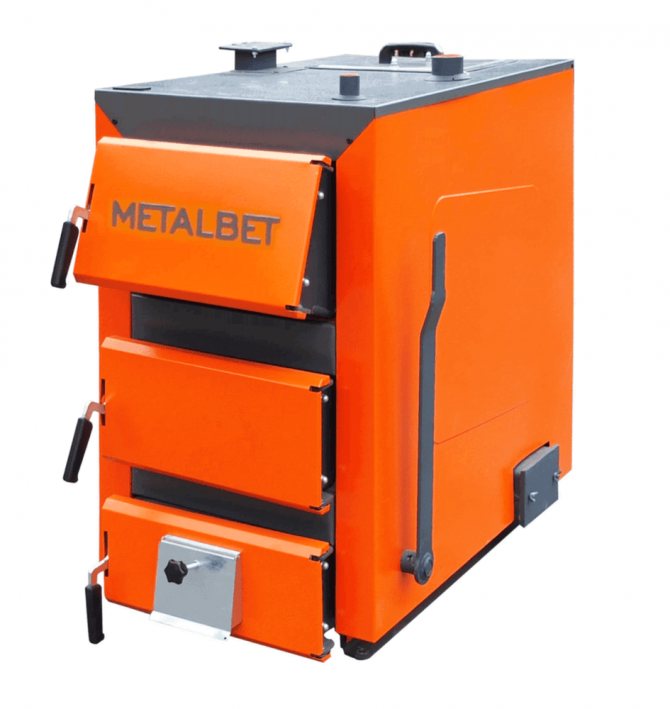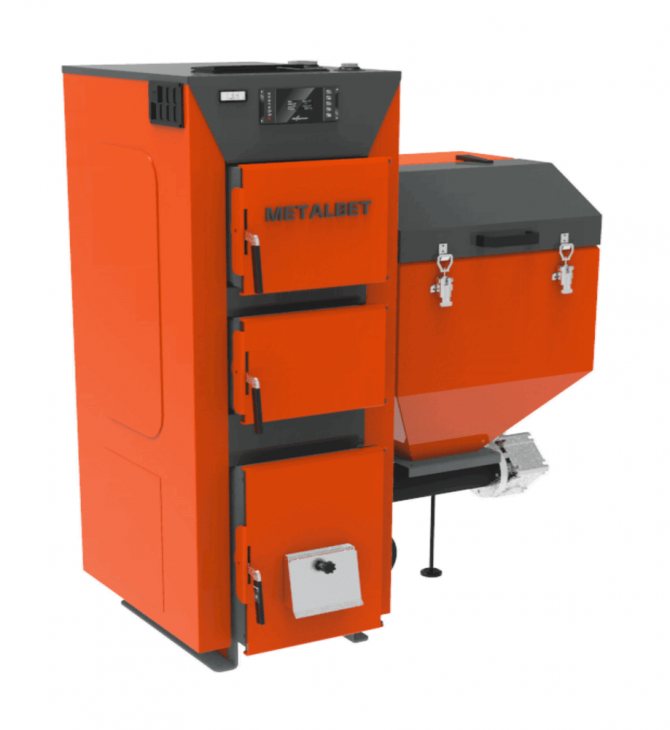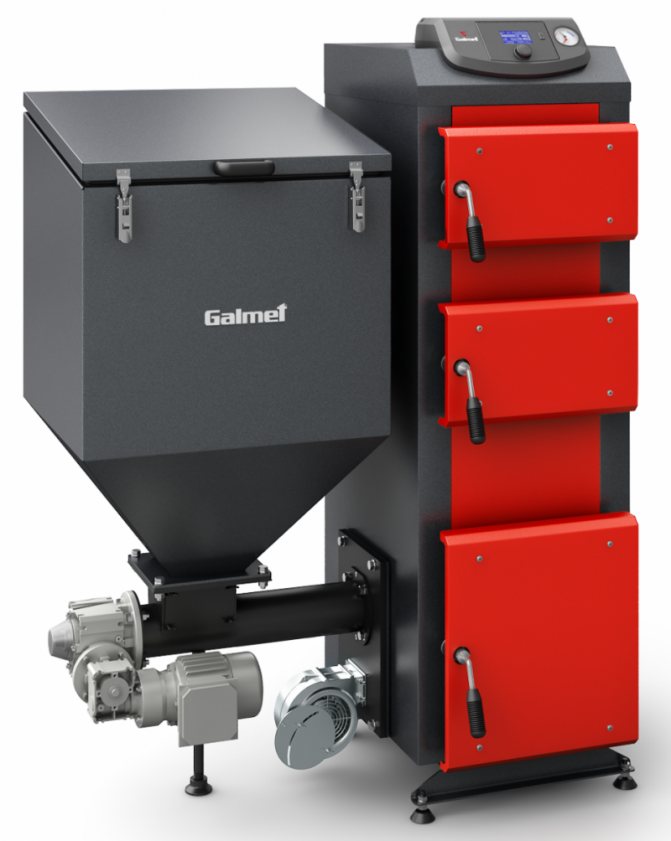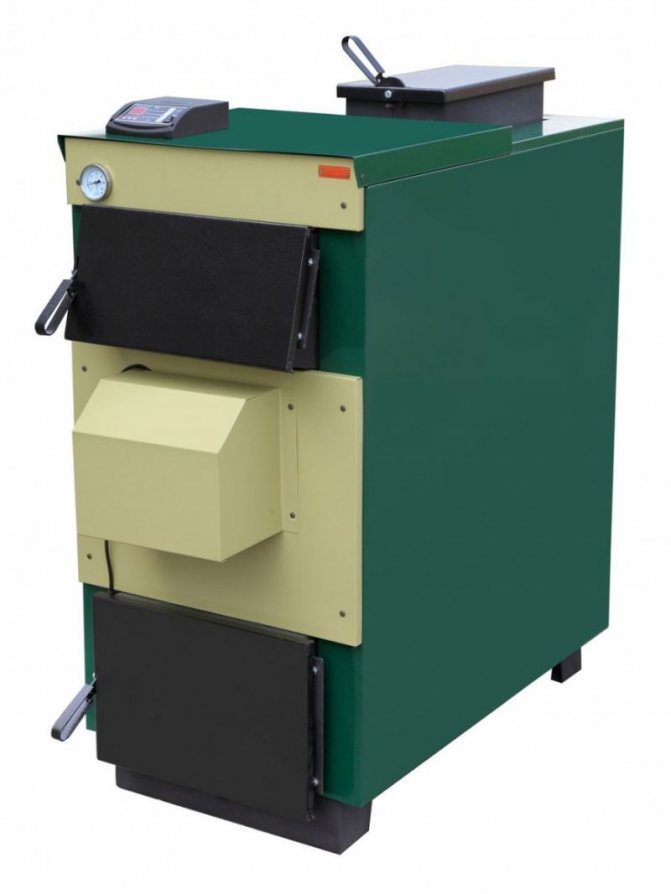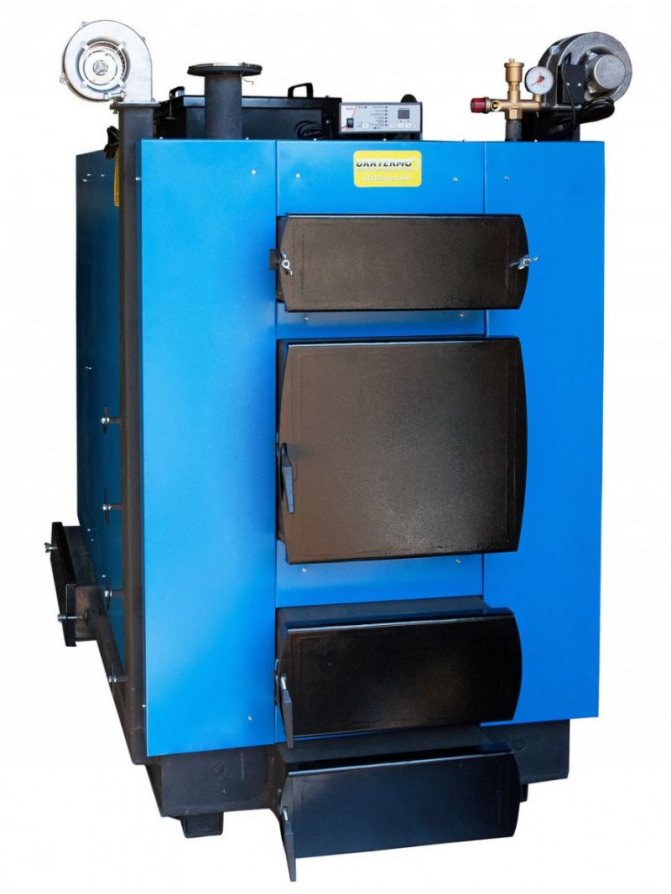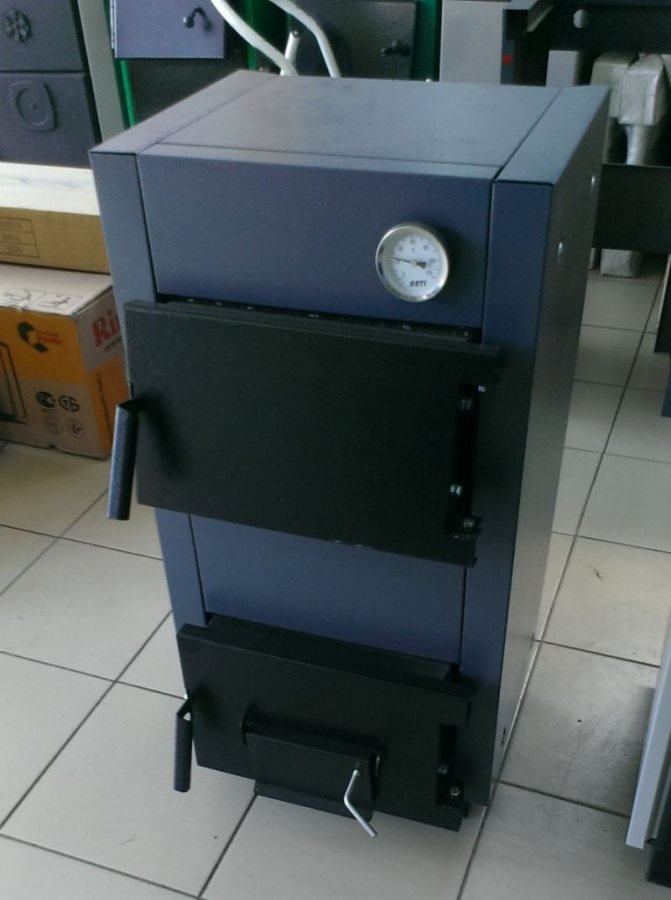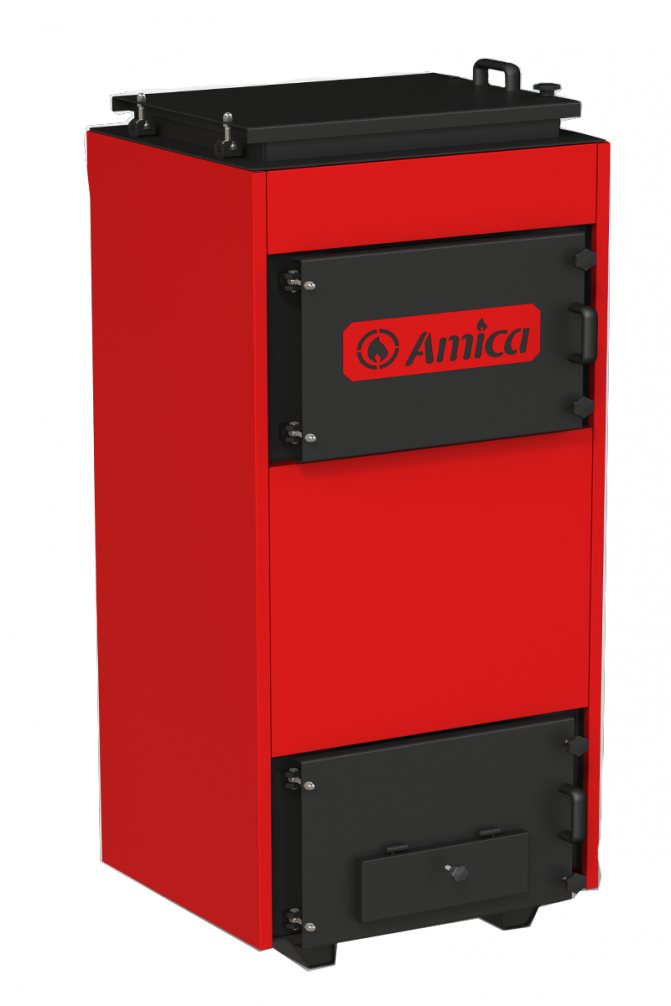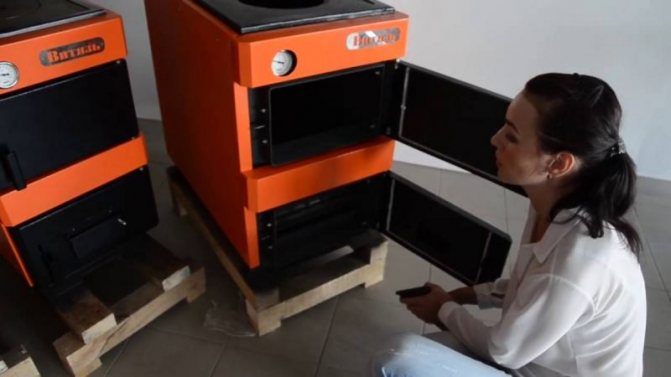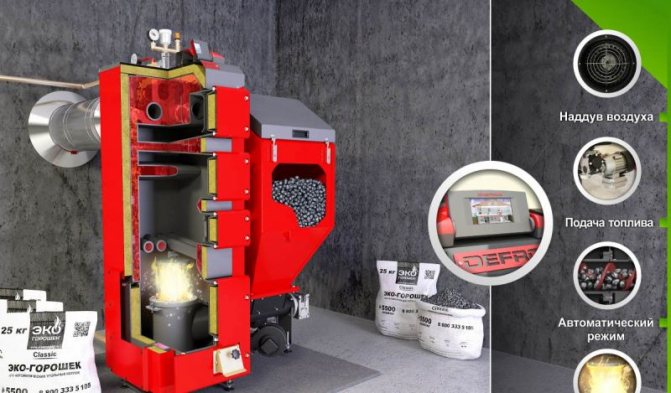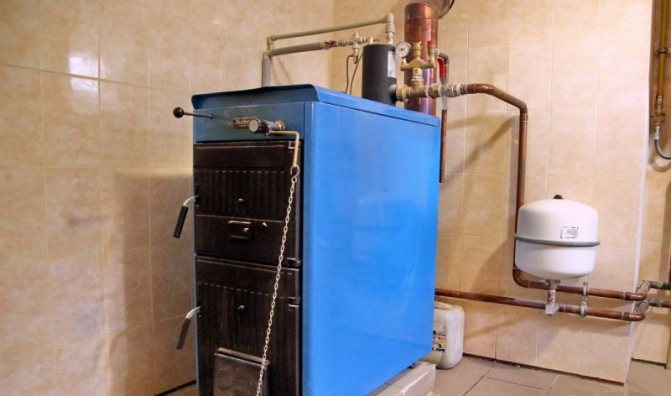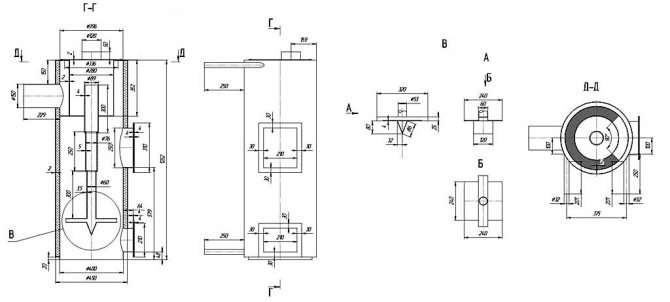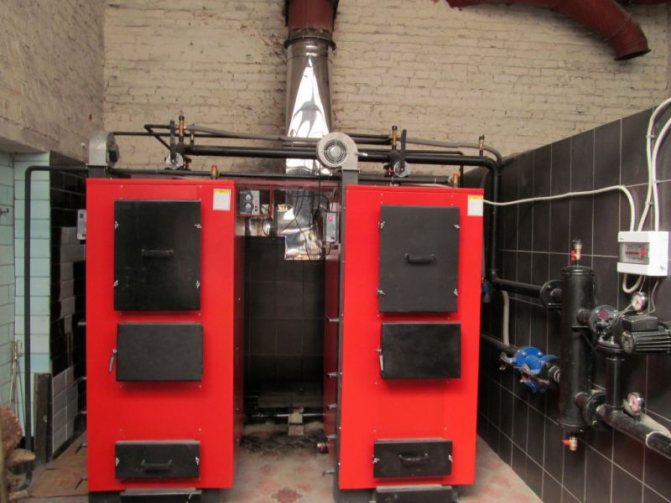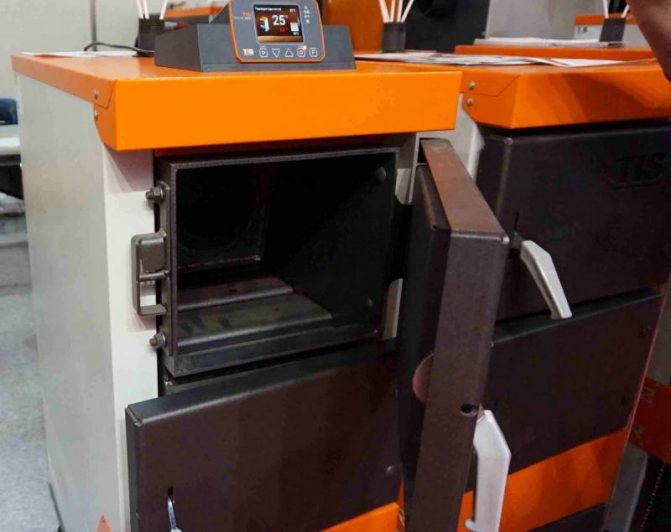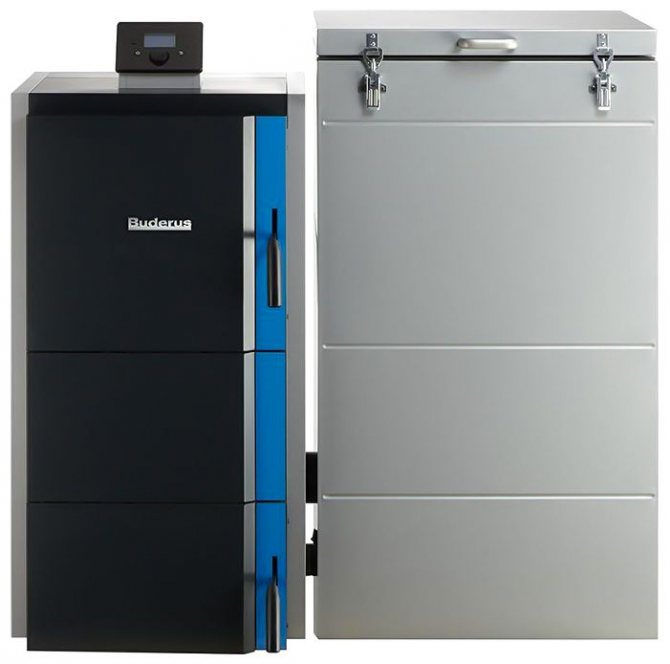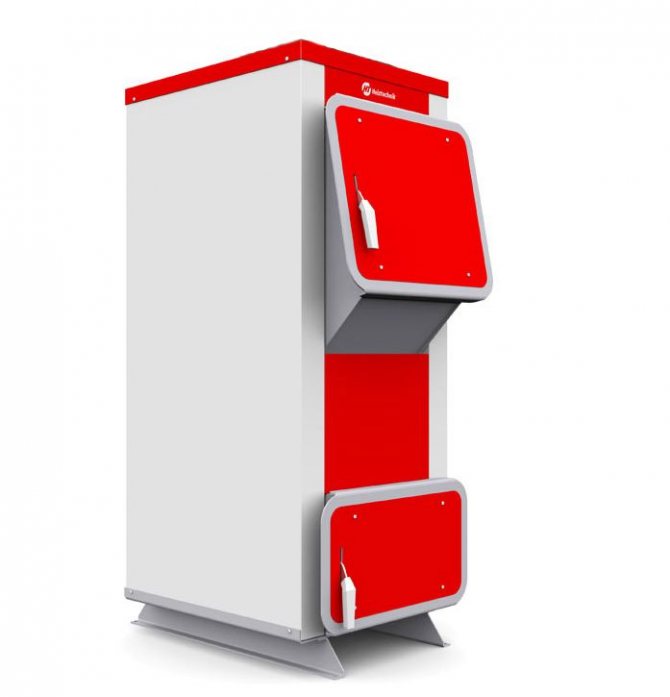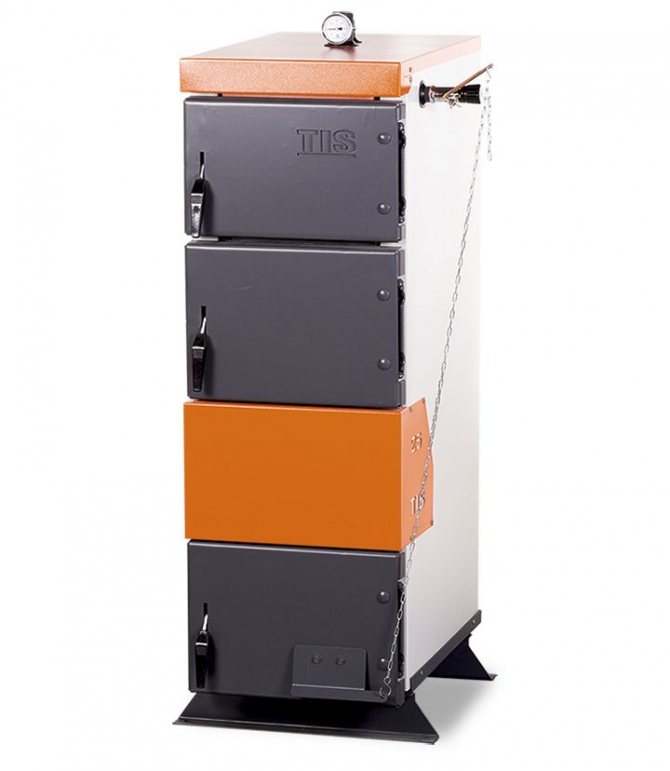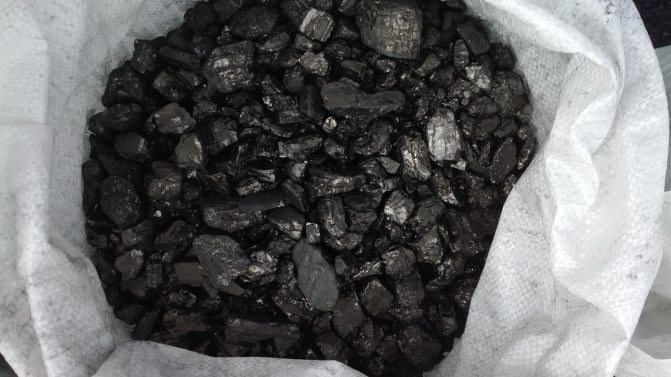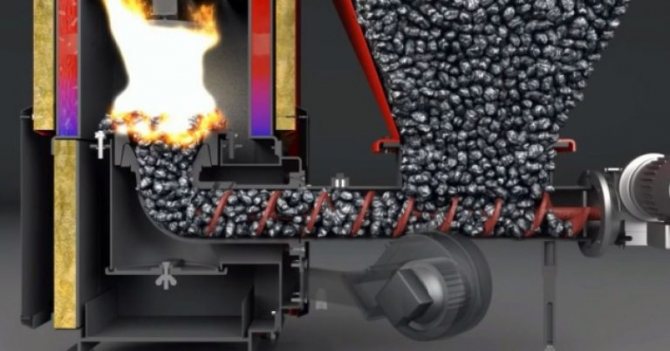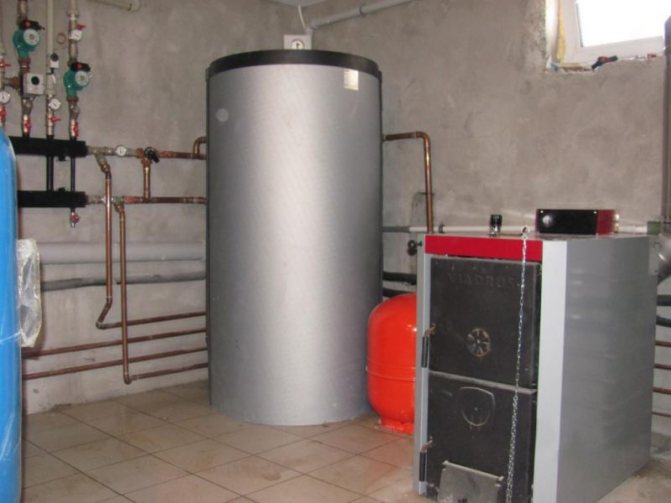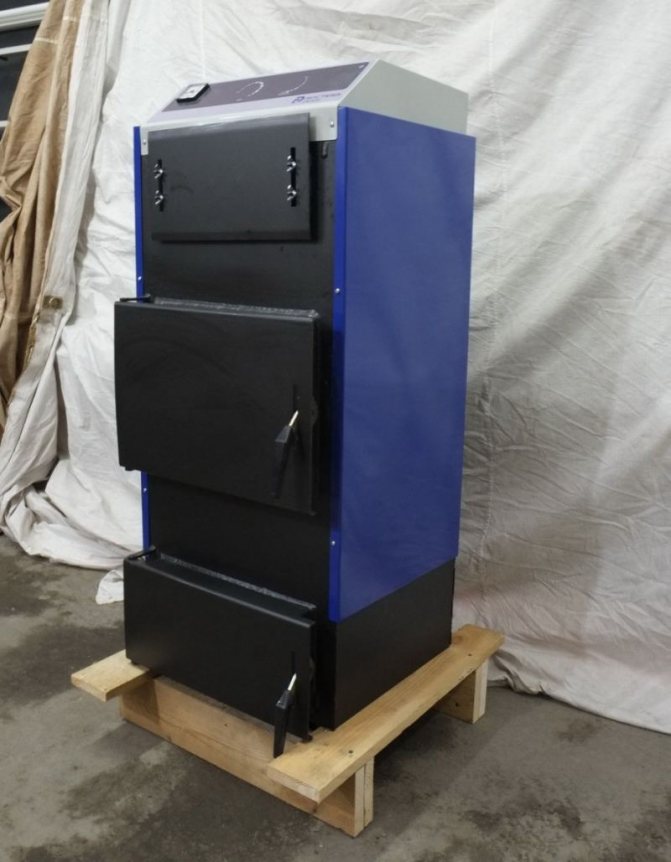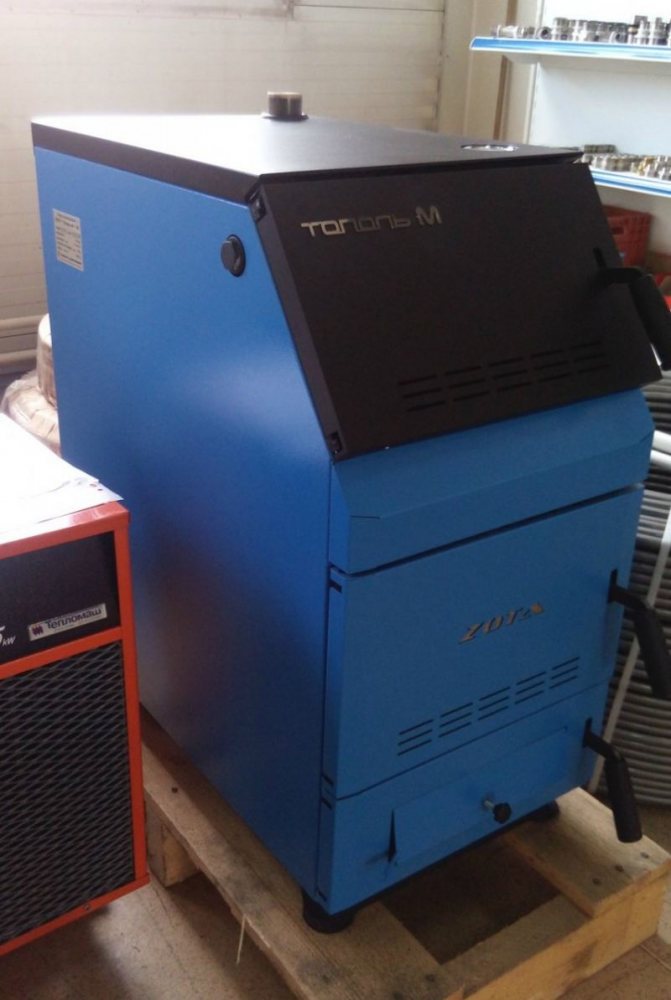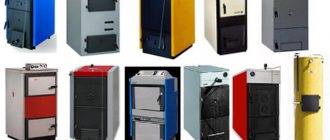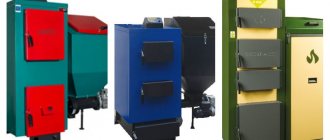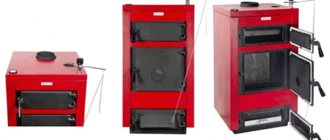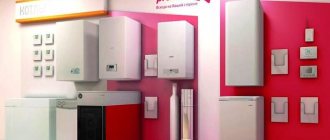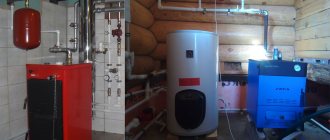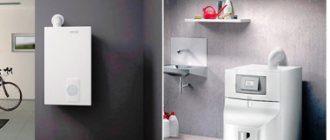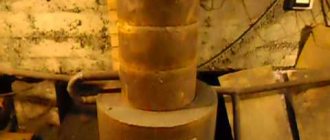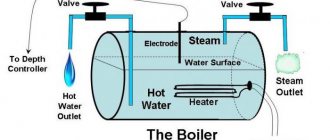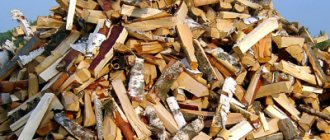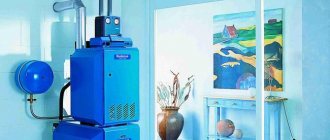The appearance on the market of solid fuel boilers with automatic feeding has greatly simplified the lives of many consumers for whom gas or electric heating is not available. The development of production has led to the creation of many models for various purposes. Knowledge of the device, principles of operation and types of automatic units will help to choose the most suitable and profitable option.
The principle of operation of a long-burning boiler
Solid fuel boilers appeared relatively long ago, but all of them, regardless of model and manufacturer, had one significant drawback. Fuel had to be constantly added as it burned out. It was ineffective and not economical. This situation continued exactly until 2000, when Stropuva found a way to fix this problem. It is to the engineer Edmuntas Stropaitis that we owe such an invention as a long-burning boiler.
Today it is the most practical and functional device for heating a private house or summer cottage, the performance level of which reaches 70, and sometimes 100%. But, unlike classic pyrolysis boilers, which also have good efficiency, such units can maintain heat for 7 days with just one batch of fuel!
What are its main technical features and why is this device so economical and efficient?
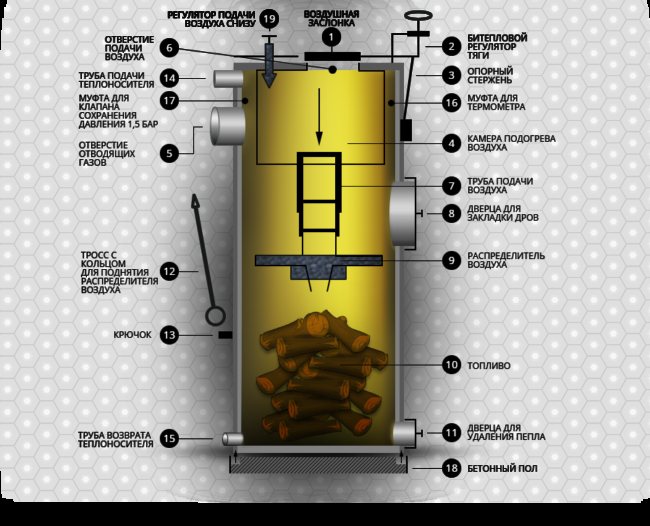
Long burning boiler device
The principle of operation of a solid fuel boiler for long burning is similar to pyrolysis units. The main heat is generated not from the combustion of wood or coal, but from the gasification of solid fuels. The combustion process takes place in an enclosed space, from where wood gas is released through a special telescopic pipe.
After that, the gas is directed to the nozzle of the heating pad, where diffusion (mixing) takes place with the secondary air pumped in by the fan. Thus, a continuous process will continue until the coal or wood is completely burned out. In this case, the combustion temperature sometimes reaches 1200 degrees.
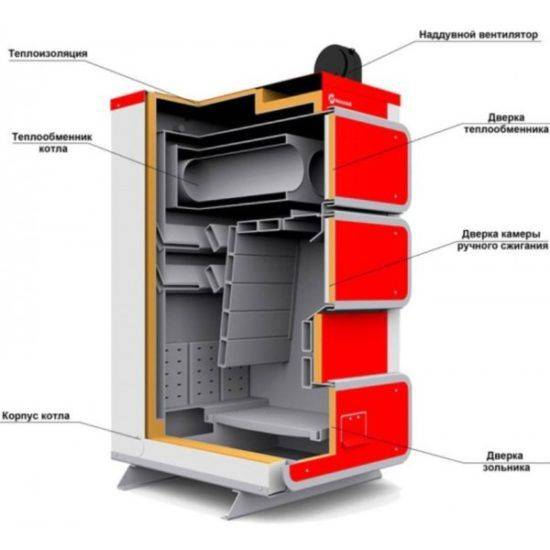

Internal structure of a long burning boiler
The effectiveness of this principle lies precisely in the fact that solid fuel is consumed very slowly, as needed, which significantly increases the efficiency of such a heater. But high productivity is not the only advantage of this design.
As a rule, the whole point of long-lasting combustion is that not all the coal or firewood is burnt out at the same time, but only the top layer. Due to the fact that the air is supplied from above, and not from below, the fuel burns out gradually, in its upper layer.
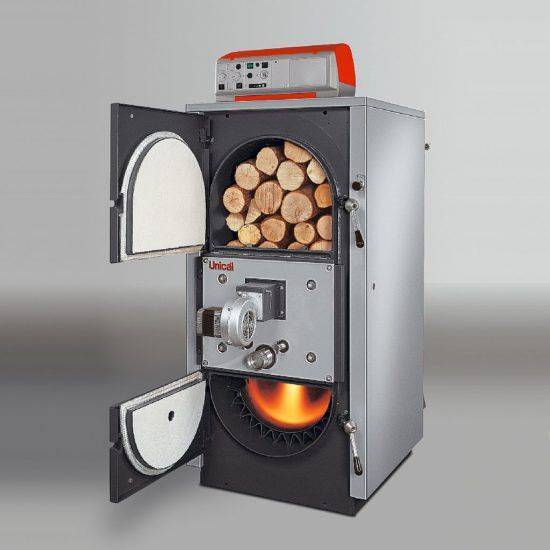

Long burning principle
When this layer burns out, the air supply is turned on, and exactly as much as is needed for the combustion of the upper layer. This provides such a duration of burning and the ability to control the process.
It should be said that this version of the heater is acceptable only as a heating system. If you need to consider a domestic water heating system, then you should look for other options.
If the option is selected specifically for heating a large house, then such an apparatus is an excellent alternative to electric and gas appliances.
Coal pyrolysis boilers
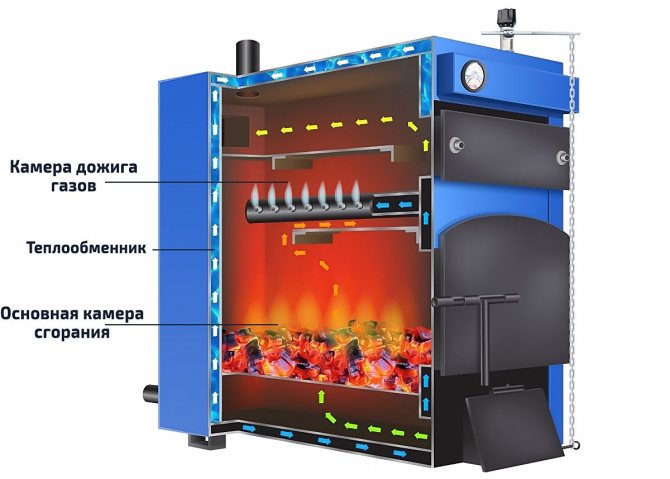

The principle of operation of pyrolysis coal boilers on the example of the Geyser VP model.
The main feature of pyrolysis-type units is that they have two interconnected furnaces: in one - coal burns and hot gases are formed t = 1200–1300ºC, and in the other - these gases are “burned out”, therefore they are cooled down to the exit from the device t = 150–160ºC and practically no smoke.
Thus, unburned flue gas particles oxidize and release additional energy used to heat the coolant. This increases the efficiency of the boiler and ensures the completeness of fuel combustion, which extends the burning time of one tab to 24–30 hours, and taking into account the bunker, up to 4–7 days.
What modern boilers are equipped with
Most models of domestic and foreign manufacturers are equipped with thermal insulation, which helps to reduce heat loss. In such boilers, the control unit equipped with a fan often replaces the automatic draft regulator.
To adjust the intensity of combustion, you can choose an automatic or manual regulator of air supply to the combustion chamber. Low-power boilers with manual adjustment are convenient in operation because they allow you to adjust the draft in accordance with the selected temperature regime.
Double-circuit solid fuel boilers are also in great demand, which simultaneously perform two functions: heating the premises of the house and providing its residents with hot water. When choosing a device, it is worth determining for yourself: whether it will be the main or auxiliary element of the system.
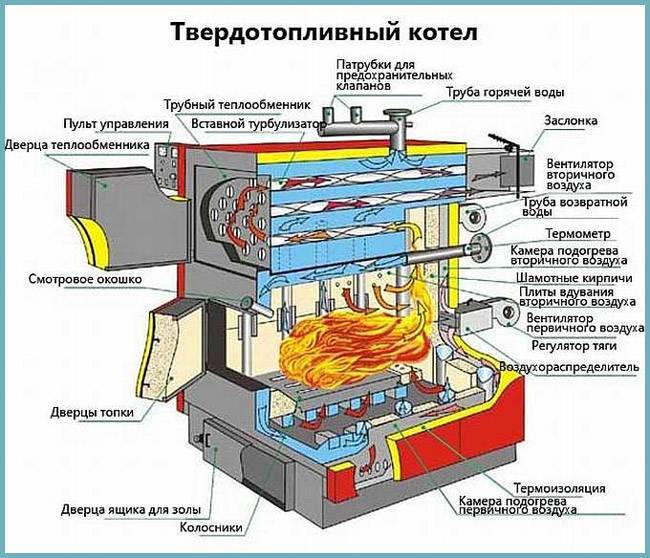

Scheme: operation of a solid fuel boiler
If you focus on the cost of a solid fuel boiler, then it is better to give preference to units of foreign manufacturers in the middle price segment. A significant difference from expensive analogs will only be the absence of complex electronics in them.
Its main task is to control the combustion process, taking into account the temperature of the interior rooms and outside air, thereby simplifying the operation of the unit.
How to properly heat a coal boiler
Before putting the boiler into operation, it is necessary to set up its operation:
- test the heating system for strength by increasing the pressure × 1.25;
- check the draft by bringing a strip of paper to the air supply flap;
- turn on heating 80 ° C and correlate the thermometer data with the draft regulator;
- adjust the position of the damper to achieve the required temperature;
- test draft at 90 ° C, at 95 ° C at the outlet, the damper should close by itself;
- after calibration, a constant temperature of approx. 80–85 ° C is set.
Due to prolonged ignition, the efficiency of the boiler decreases, therefore it is recommended to first burn lighter fuel with lower efficiency, and only then add fuel with higher efficiency. For example, you can start kindling with paper and small dry wood, and after they have completely burned out, add charcoal.
Subsequent maintenance is reduced to performing cyclical actions:
- timely loading of coal into the furnace or bunker, if the boiler is automatic;
- removal of the upper crust layer, sintered and fused pieces of coal;
- cleaning the combustion chamber from slag and ash pan from accumulated waste.
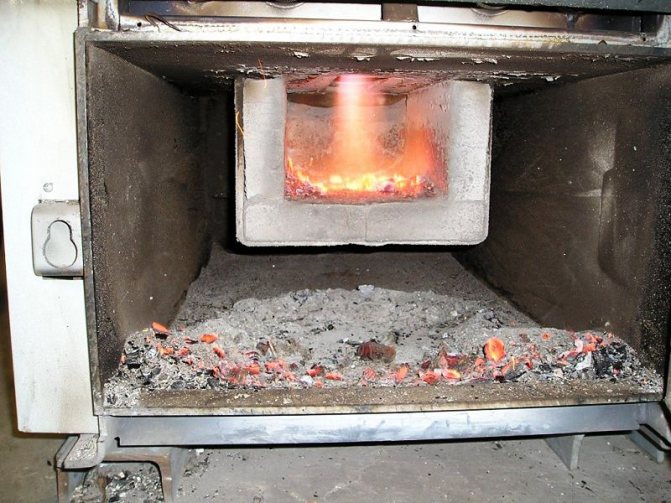

Ash pan of a pyrolysis boiler when fired with coal. To save raw materials, sift the contents of the ash pan through a sieve, the unburned coal fractions remaining in the sieve can be sent to the re-furnace!
Classic boilers are not demanding on fuel: they are fired with almost any solid fuel, even household waste, but high performance can be achieved only using coal with a moisture content of up to 30% and an ash content of up to 25%. Otherwise, the efficiency will be much lower than that declared by the manufacturer.
But the design of pyrolysis boilers and long-term combustion was originally developed for a certain standard, therefore, the requirements for fuel quality are higher: the coal should not only be low-moisture - up to 20% and low-ash - up to 15%, but also have a fixed size - from 5 to 25 mm.
Combined boilers rating
A large number of different models sometimes causes difficulties in choosing even for specialists, not to mention ordinary buyers, so we publish the top 5 models. For clarity, let's summarize the data in a table.
Table 1. The best models of 2018-2019
| Model | Fuel types | Description | power, kWt | Efficiency,% | Weight, kg |
| ZOTA MIX-20 | Coal, firewood, gas, diesel fuel, electricity | A model from a Russian manufacturer that consumes the main types of fuel without any problems. Withstands a short-term increase in pressure up to 4 atm (working 3 atm). Heating element material - seamless stainless steel tube. Their work is controlled by an external control panel. Also, the device is equipped with a draft regulator and a thermomanometer, which increases the efficiency of the combustion process. To protect against heat loss, the water jacket is insulated. The durability of the outer casing is achieved by powder coating. | 3-9 | 80 | 140 |
| KARAKAN 16TPEV 3 | Firewood, gas, electricity | The two-circuit model of the Russian manufacturer is especially popular among rural residents, because equipped with a wide hob, on which food is prepared for both yourself and your cattle. The unit will easily heat an area up to 160 sq.m., this applies not only to residential, but also to industrial premises, incl. greenhouse or garage. The depth of the steel furnace is 0.56 m. The "water jacket" prevents the metal from overheating or burning out, which makes the service life of the device long. | 9 | 75 | 120 |
| Teplodar Kupper PRO 22 | Firewood, coal, gas, pellets | The domestic model can easily heat rooms up to 220 sq.m. When using firewood or coal, the unit acquires the features of a long-burning boiler, since on one tab the operating period is 8 and 10 hours, respectively. Another plus is a spacious firebox that can hold firewood up to 600 mm long. | 6 | 80 | 115 |
| Kiturami KRM 30R | Firewood, briquettes, coal, diesel. | A double-circuit boiler from South Korea is equipped with multiple combustion chambers and electronic control. Able to heat a room up to 350 sq.m. The heat exchangers are made of alloy steel, so it is not worth increasing the pressure too much. | 35 | 85-92 | 170 |
| Protherm Bison 40 NL | Gas, diesel, fuel oil | A two-circuit model from Slovakia is capable of heating areas up to 400 sq.m. The control is carried out with the help of a microprocessor, and the parameters of the boiler operation at each moment of time are clearly visible on the electronic display. | 38 | 89 | 148 |
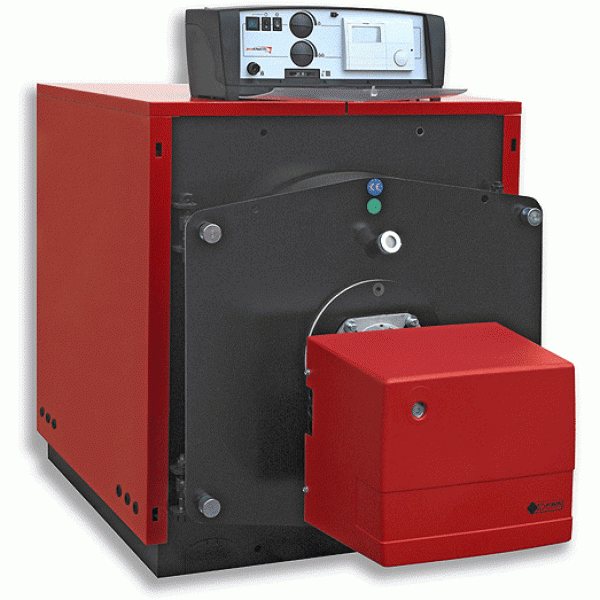

Exterior view of the boiler Protherm Bizon 40 NL
The best known manufacturers and models: characteristics and prices
Recently, Russian coal-fired boilers have become more and more popular: their quality is constantly improving, and the cost remains quite low in comparison with foreign counterparts. Nevertheless, the most functional and automated boilers are still from European manufacturers. Please note that almost all models have different power versions.
Direct combustion
ZOTA "Master" 20
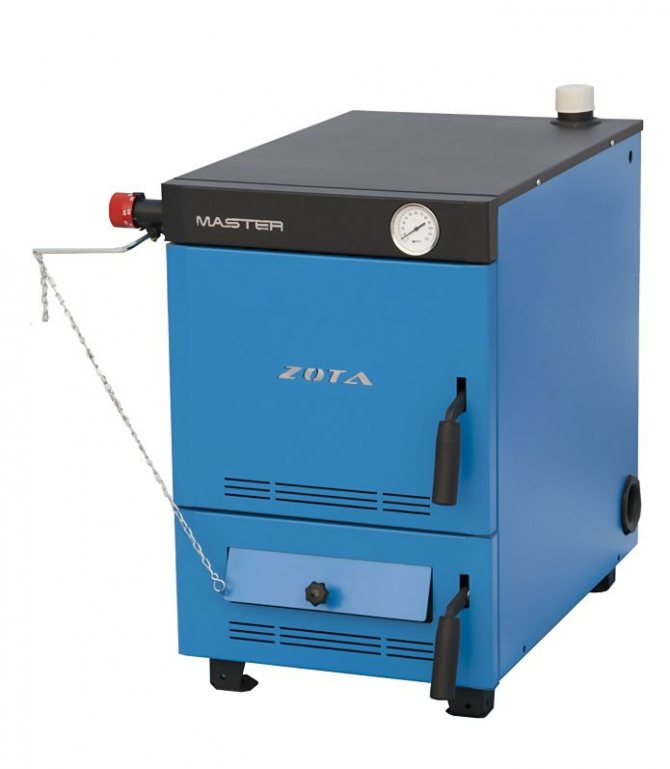

ZOTA "Master" with a power of 20 kW is a very budget insulated (basalt cardboard) boiler that can withstand pressure up to 3 bar and runs on almost any fuel: coal, wood, pellets and gas (optional). He also uses electricity as an auxiliary heat source (TEN).
Country of origin: Russia, OOO TPK KrasnoyarskEnergoKomplekt.
Cost: 25 690-31 889 rubles.
Protherm "Beaver" 20 DLO
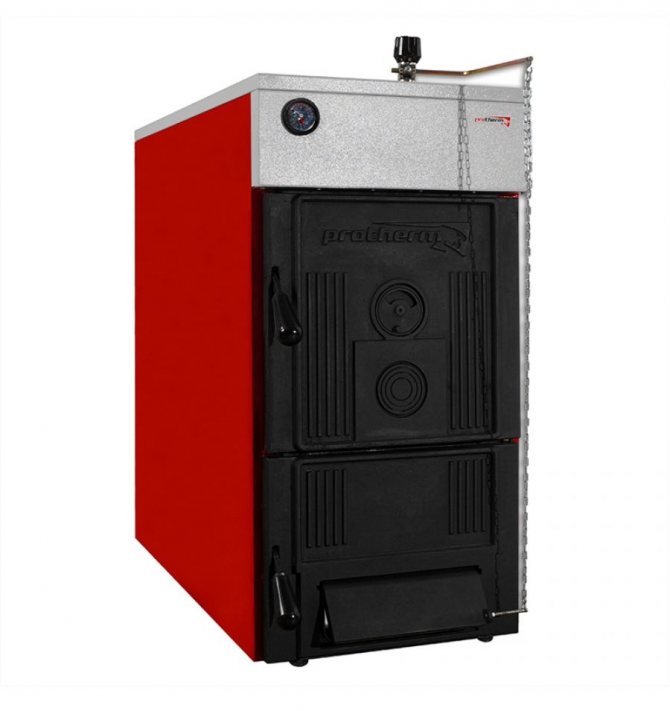

Protherm "Beaver" with a capacity of 20 kW is a non-volatile boiler with an operating pressure of up to 4 bar, which has an increased service life, since it uses a high-tech (GG20) cast-iron heat exchanger that is resistant to corrosion and thermal shock. It can only be heated with various coal and wood.
Country of origin: Slovakia, Vaillant Group LLC (Vailant Group rus).
Cost: 67,600-68,445 rubles.
Bosch "Solid" 2000 B SFU 12
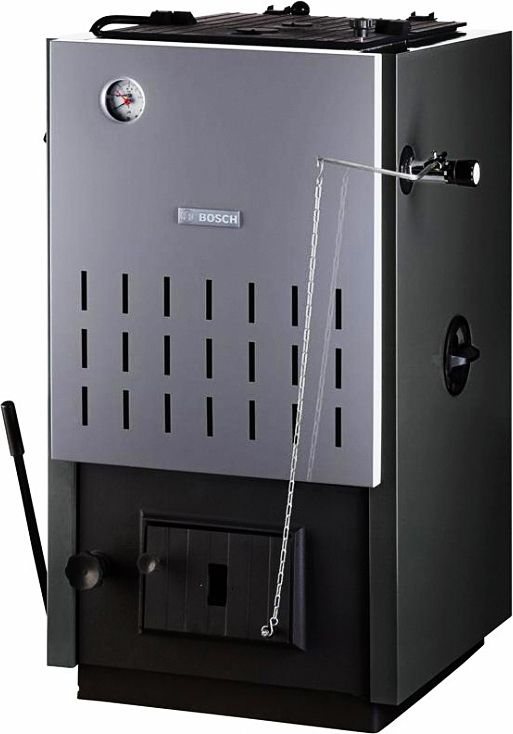

Bosch "Solid" 2000 B SFU with a power of 13.5 kW is a simple, reliable boiler, sharpened for the use of brown coal, but can also burn coal, coke, firewood and wood waste. Equipped with a built-in pressure control device (max. 2 bar), thermal protection and gas swirlers.
Country of origin: Germany, Bosch LLC (Bosch Thermotechnika rus).
Cost: 48 764– 51 436 rubles.
Long burning
Stropuva S15U
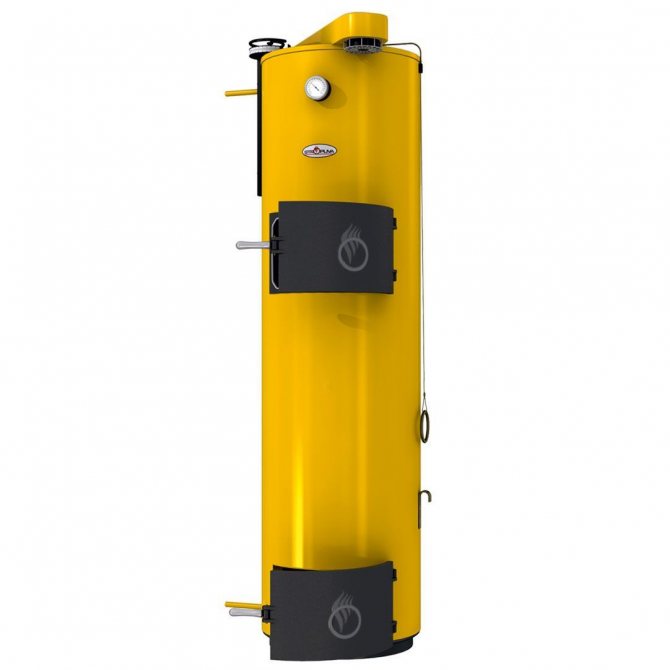

Stropuva S15U with a capacity of 15 kW - thanks to a volumetric furnace that can hold up to 240 kg of coal, this innovative boiler is the unrivaled leader (among compact devices) in terms of burning time per tab: up to 7 days. It consumes coal, pellets, briquettes and firewood, at a maximum pressure of up to 3 bar.
Country of origin: Russia-Lithuania, STROPUVA LLC (STROPUVA).
Cost: 81,500-99,778 rubles.
Boilers with a burning time of one fuel tab up to 7 days
Buderus "Logano" S181-15 E
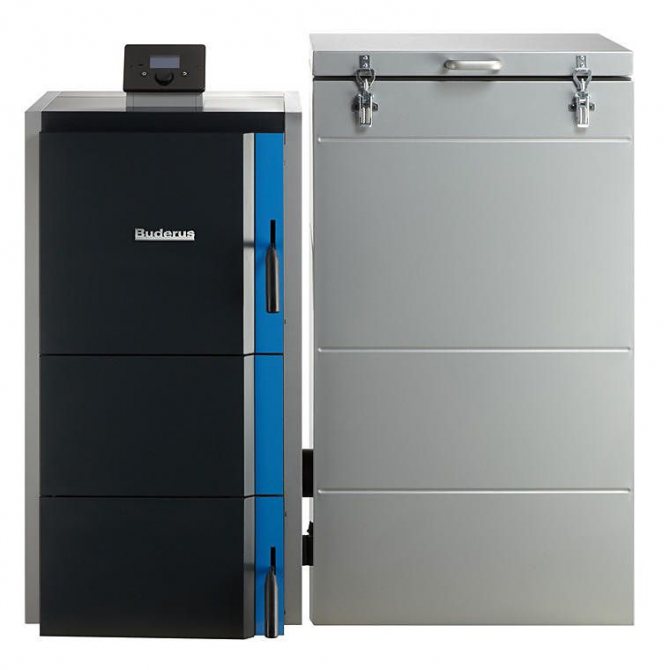

Buderus "Logano" S181-15 E with a capacity of 15 kW is one of the best bunker automatic coal boilers for heating a private house, with built-in water and gas temperature sensors. The improved design of the heat exchanger ensures long burning of coal / pellets and withstands pressures up to 3 bar.
Country of origin: Germany, Bosch LLC (Bosch Thermotechnika rus).
Cost: 252,000-258,840 rubles.
LIEPSNELE L20U
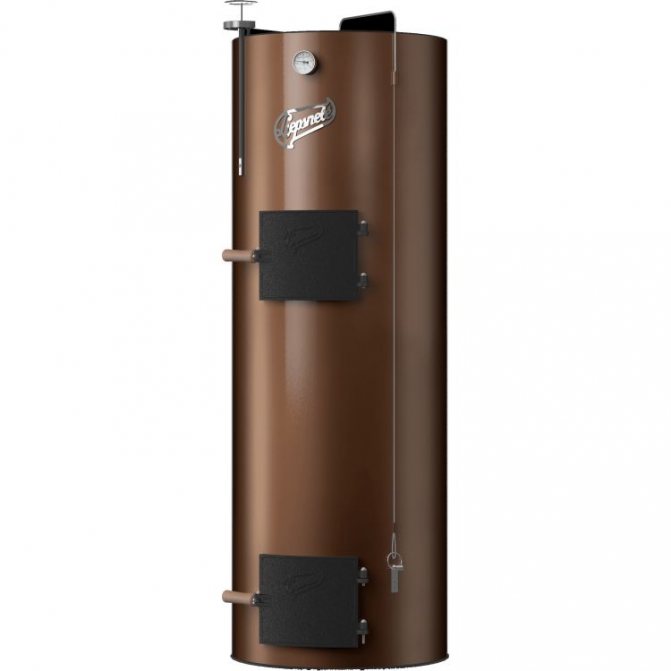

LIEPSNELE L20U with a power of 20 kW is an almost "omnivorous" solid fuel unit that consumes coal, firewood, coal briquettes and pellets, peat, wood chips, other wood waste, etc. When fully loaded with coal, it maintains combustion for up to 7 days. The pressure level is limited to 1.5 bar.
Country- UAB (Vakaro Race).
Cost: 85 449-90 456 rubles.
Galmet "CARBO" 21
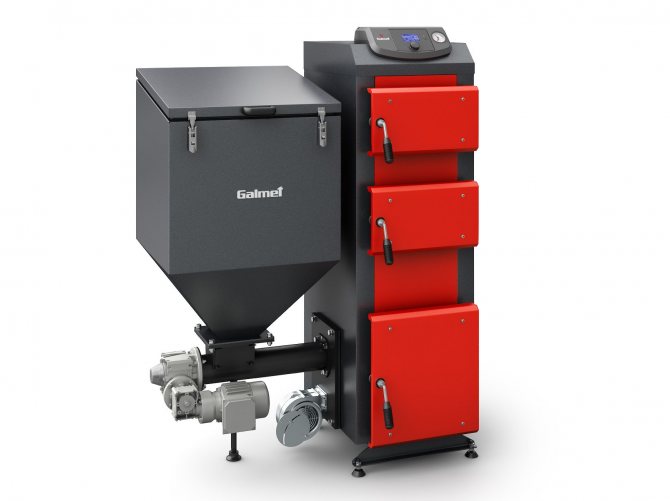

Galmet "CARBO" 21 with a capacity of 22 kW is a Polish semi-automatic coal-fired boiler already in its basic configuration has a fairly rich equipment: an intelligent PID controller that controls all boiler components and controls the combustion process, a flue gas sensor, a thermometer and a pressure gauge. Pressure limit - up to 2 bar.
Country of origin: Poland-Russia, GALMET LLC (GALMET-RUS).
Cost: 113 890-116 759 rubles.
The principle of operation of the equipment
The working process is based on the combustion of fuel in the corresponding chamber
It is important to note that different materials can be used as fuel. For example, for a combi boiler, wood and coal are not the only energy sources.
Such models can accept briquettes, granules, husks and shavings. But for this, it is necessary that the design of the chamber be oriented to work with other types of solid fuels.
Regardless of the type of raw materials consumed, the firebox emits heat energy, which can be directly converted into hot air streams, or go to a heat exchanger to heat water. If a coal-fired boiler is used, then the combustion process will be long, and the potential of thermal energy is high. Conversely, low density dry firewood or briquettes with shavings burn quickly, leaving little heat, but a lot of ash and ash.
Types of boilers by type of fuel bunker
There are two types of loading devices: built-in fuel bunker and mechanized storage. The battery life and the area occupied by the boiler plant depend on which of them the unit is equipped with.
Integrated fuel hopper
Models with a built-in charging device are equipped with a solid fuel container, which is located on the top or side of the main boiler chamber. The advantage of this design is the relative compactness of the heating system. However, in terms of battery life, models with a built-in bunker are inferior to units with a mechanized fuel storage.
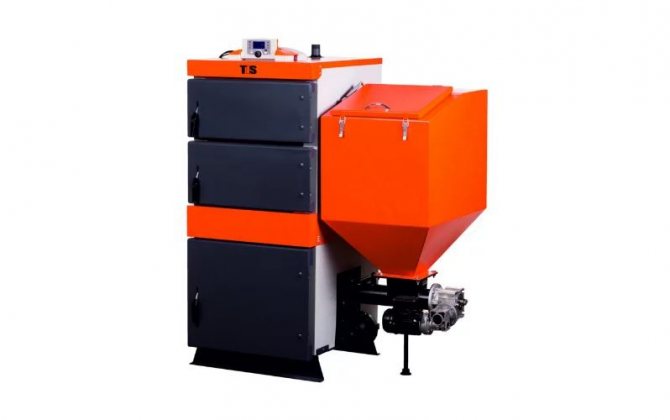

Mechanized fuel storage
Here, a separate room or part of a room with a connected fuel supply system acts as a loading device. The volume of such a storage facility is sufficient to accommodate an annual supply of fuel.
The models are distinguished by a complex electronic automatic control system that fully regulates all work processes, as well as the presence of a remote control unit.
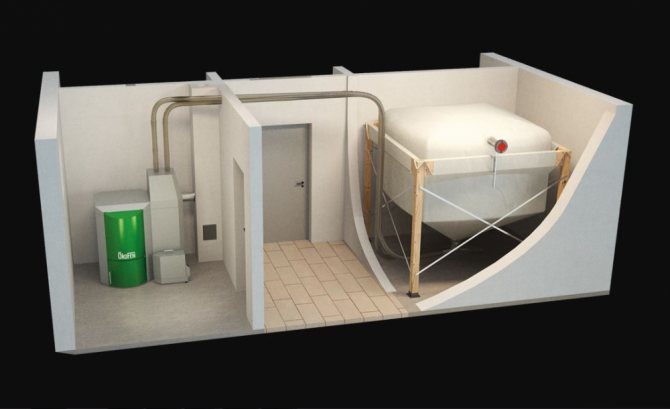

Automatic boilers
The automatic long-burning coal-fired boilers offered on the modern market are designed according to the principle of pellet installations. Their feature is the presence of a burner device and a hopper for loading the fuel supply. The device of the heat-exchange part of the units repeats the design of their traditional "counterparts"; a fire-tube heat exchanger or other multi-pass design is used to transfer heat.
The main feature is a retort burner.It consists of a bowl - a retort, a feed auger with a gearbox and an electric motor, and a fan for air injection. Coal from the hopper will fall into the intake opening of the auger feed, which moves it into the bowl. The latter has lateral slots for the intake of air forced by the fan.
Such a coal-fired boiler is fully automated, starting from the electric ignition operation and ending with the control of the combustion intensity. The duration of the unit's operation is not limited by the fuel supply, which can be replenished by pouring it into the bunker on the go. Only the frequency of maintenance and cleaning requires stopping the boiler once a week.
A striking representative of this type of heaters is an automatic coal boiler of the Heiztechnik brand, equipped, in addition to the main units, with a circuit for supplying hot water, a circulation pump and a programmable controller with the ability to connect external thermostats. The controller controls the operation of the burner and can stop it at any time, which is a significant advantage for solid fuel units. Another plus is the ability to put the grate in a short time, remove the burner and continue working with the traditional direct combustion of fuel in the furnace. The efficiency of the unit is declared by the manufacturer at the level of 88%.
The disadvantages of a coal-fired boiler with a screw burner are its high cost and demanding fuel quality. The manufacturer's requirements for Heiztechnik are as follows:
- fraction size - no more than 25 mm;
- humidity - up to 10%;
- dust content in fuel - no more than 20%;
- coal for automatic boilers - medium coking, type 31 or 32, no higher.
Bunker automatic boilers
Automatic coal-fired boilers differ from previous versions in that in them the regulation of all working processes in whole or in part (if we are talking about semi-automatic models) is carried out by a programmable microprocessor controller connected to sensors and thermostats.
Long-term combustion is supported by forced air-supplying fans (blowers) and a traction system for removing combustion products.
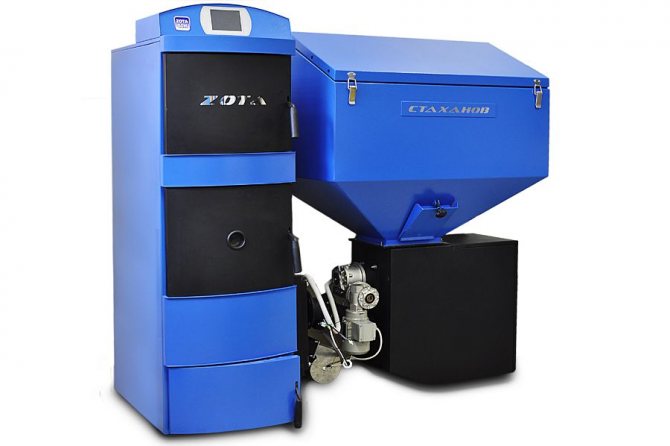

Model Zota Stakhanov 20. Coal is fed by an automatic mechanism from a bunker connected to the boiler, the feed volumes are regulated by the boiler unit automatics.
For an uninterrupted refueling process, a loading hopper is provided - a metal box with a screw conveyor installed below.
The capacity of the built-in fuel tank in a bunker coal boiler is enough for an average of 2-7 days, and if the fuel is supplied from a separate mechanized storage, then, depending on the area, its capacity may be enough for 3-4 weeks or even for the entire heating season.
Advantages of boilers of this type
As mentioned above, a modern coal-fired boiler has a lot in common with the classic Russian stove. But if a hotly heated brick hearth heats the air in the house directly, then the coal boiler heats the water, which then circulates through the radiator system of the heated room.
In all other respects, solid fuel boilers for heating a private house embodied the versatility of the original Russian predecessor. For example, they are unpretentious in the choice of combustible material and allow you to charge firewood, briquettes, pellets, sawdust, waste paper, rags, which in itself is a good idea for the disposal of combustible waste.
On the other hand, of course, the operation of the boiler on "grazing" fuel requires more control: you will have to follow the readings of the instruments and replenish the tank more often. And since such raw materials burns unevenly, temperature drops are possible in the radiator system. Not to mention the fact that garbage unsuitable for fuel leaves carbon deposits and soot that need to be cleaned.
Therefore, despite the abundance of waste fuel, prudent (read lazy) owners acquire a large supply of long-burning coal. The stove can operate on such a heat source for several days without requiring additional maintenance, cleaning and even refueling.
Unlike the Russian stove, which requires adherence to a certain kindling technology, the coal boiler is extremely easy to use - just open the firebox and throw coal inside
This operation requires a minimum of precautions, the peculiarities of the installation and operation of a coal boiler imply that all potentially dangerous processes are automatically controlled.
Another advantage of a coal-fired boiler is its high efficiency, and the use of modern energy-saving technologies has doubled the productivity of new solid fuel boilers compared to old-style coal stoves.
Of course, for a city dweller spoiled by centralized heating and water supply, the need to load the tank from time to time may seem tedious, but only at first glance. Almost all modern coal-fired boilers make the most of a single load, and temperature control is carried out by sensor systems and air supply devices.
Due to their high efficiency and safety, coal-fired boilers are successfully used for heating cottages and summer cottages, residential buildings and offices. But, of course, coal equipment is ideally used in private residential construction, where its surface can also be used to heat food.
Pellet automatic units
One of the most common types of heat generators is wood pellet systems. The principle of operation of pellet boilers is in many ways similar to other automatic units, but there are also characteristic features.
If you trace the similarities and differences, as well as the advantages and disadvantages of such models, it will be easier to choose the appropriate option.
Principle of operation
The basic design of pellet systems is no different from other common automatic heat generators. The fuel bunker is loaded with combustible materials, from where they are gradually poured onto the auger conveyor. The shaft transfers the pellets to the combustion chamber, where the heating agents are heated.
Differences in work can be traced at the stage of fuel supply:
- After starting the auger, the mechanism directs the pellets first into a flexible hose or plastic tube, which dumps the pellets into the dispenser.
- In the metering device, the second shaft measures the required portions of fuel and transfers them to the petal valve.
- The shutter opens and the pellets are dumped onto the third auger, which transfers the measured amount to the firebox.
The described algorithm may vary slightly depending on the implementation of a particular model.
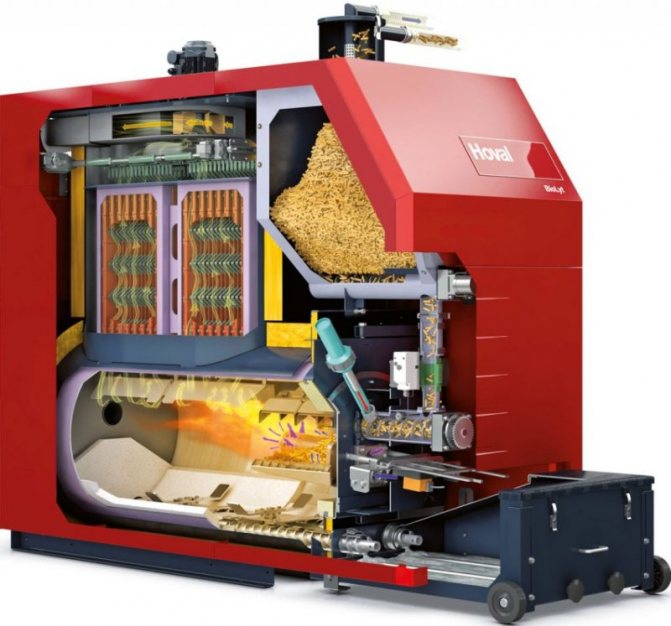

Benefits
The economic and operational benefits of pellet heating systems are mainly related to the advantages of the type of fuel used.
Wood pellets are not inferior to traditional combustible materials in terms of calorific value, but they have a number of advantages:
- lower cost;
- economical consumption, which leads to a longer operating time without additional loading;
- increased environmental friendliness;
- the minimum amount of combustion products in the ash pan.
As for the advantages of the boilers themselves, as a rule, they are smaller in comparison with units operating on other types of fuel.
disadvantages
In addition to the listed advantages, there are also disadvantages.
Since the flame in most pellet models has a horizontal direction, overheating of the boiler structural elements may occur. In addition, the efficiency and power of such equipment is lower.
Selection criteria for solid fuel boilers for long burning
We have already familiarized ourselves with the general classification of solid fuel boilers. It's time to consider the criteria by which the owners of private houses determine the most suitable options for units for installing heating systems. After reading the following sections, you will learn how to choose the right long-burning solid fuel boiler for your home.
Type of fuel
First of all, you must decide on what kind of fuel will be used for heating. Proceed from what type of fuel is more convenient to buy and import. If you have harvested wood, it is wise to purchase a wood-fired boiler. Pellet heating can be recommended to the owners of cottages where there are no trees. Coal-fired boilers are suitable for those who have the opportunity to order high-quality fuel on favorable terms. Sawdust heating systems are generally used to heat wood processing facilities.
Boiler power
To determine the required power of the heating system, you need to perform simple mathematical calculations. Calculate the total volume of the premises to be heated. The resulting figure will help you find a model with the appropriate parameters in a wide range of solid fuel boilers for long-term combustion. Keep in mind: you always need to provide a reserve of power so that during a severe winter frost it is not cold in the house.
Device weight
When choosing a solid fuel boiler for long-term combustion for heating a private house, the mass parameter is taken into account only if the owner intends to fix the purchased unit on the wall. According to state standards established by the gas service of Russia, this installation method is allowed for heating boilers with a volume of less than 100 liters.
Loading chamber volume
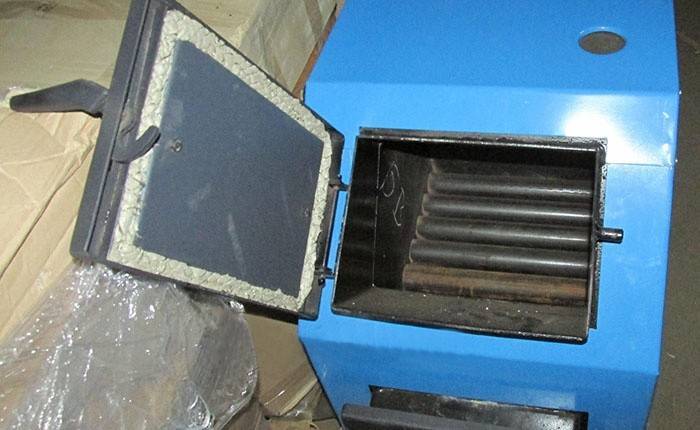

This parameter characterizes the ratio of the volume of fuel to be put in with the power of the heating unit. The more fuel fits in the loading chamber, the less often you will need to replenish the supply of firewood / coal / pellets. For steel boilers, the ratio of these values is 1.6-2.6 l / kW. Cast iron heating units consume less fuel - 1.1-1.4 l / kW.
The total volume of the loading chamber will help you to roughly assess the capabilities of the boiler. You will not be able to fill it 100% in any case. The useful volume of the loading chamber is of much greater importance. This value displays the actual amount of fuel that you can load into the combustion chamber. To determine it, you need to know the principle of combustion of the selected boiler and the method of loading fuel (top or front).
Boiler efficiency
One of the most important parameters for any solid fuel heating unit for long-term combustion. The figure expressing the boiler efficiency characterizes that part of the generated heat energy that is actually spent on heating the home. By choosing a high efficiency unit, you can reduce your power requirements. Poor efficiency means unnecessary heat wasted, so you have to add more fuel to keep your home at an acceptable temperature.
Which one to choose: in detail about the characteristics that are worth paying attention to
The project will help you to make the right choice, it specifies all the requirements for the design parameters, communication connection possibilities, installation data of the room, etc. Special attention in the documentation is paid to the operational characteristics of the device itself.
Direct, long burning or pyrolysis
Comparison of coal-fired boilers using different combustion technologies:
| Direct burning | Long burning | Pyrolysis | |
| Maximum efficiency | 65–75 % | 78–84 % | 85–92 % |
| Autonomous work | no Yes | no Yes | Yes |
| Volatility | no Yes | no Yes | Yes |
| Refueling period | 6-10 h / —— | 12-18 hours / 1-2 days* | 24-30 hours / 4-7 days* |
| Fuel moisture | w ≈ 30-50% | w ≈ 20-30% | w ≈ 7-15% |
| Allowable fraction | up to 60–80 mm | up to 25-50 mm | up to 5-25 mm |
* refueling period taking into account the built-in automated bunker
It can be concluded that there simply cannot be a more efficient combustion of fuel than in an automatic pyrolysis boiler, therefore, if the plans of the owner of the house do not include night refueling and constant supervision of the operation of the unit, then it is better to choose this option.
However, it is worth taking into account its exactingness to the quality of fuel and in advance to attend to the search for a reliable supplier of fine-grained coal or purchase a crusher. In addition, such a heater works only in conjunction with automation, that is, it needs to provide uninterrupted access to power supply.
Primary heat exchanger (body) material
The material from which the body of the coal boiler is made is an important factor that determines the durability and maintainability of the heating system:
- steel - a lightweight plastic material that can easily withstand pressure and temperature drops, but is prone to corrosion and through-burning;
- cast iron - durable material that allows the use of high boiler capacities, but does not tolerate shocks and sudden temperature fluctuations poorly.
If the steel heat exchanger is slightly damaged, there is a high probability that it will be possible to weld the hole, especially if a high-quality "boiler" metal with a thickness of more than 4 mm was used, but if even the slightest crack forms on the cast iron, then the entire part will have to be replaced entirely.
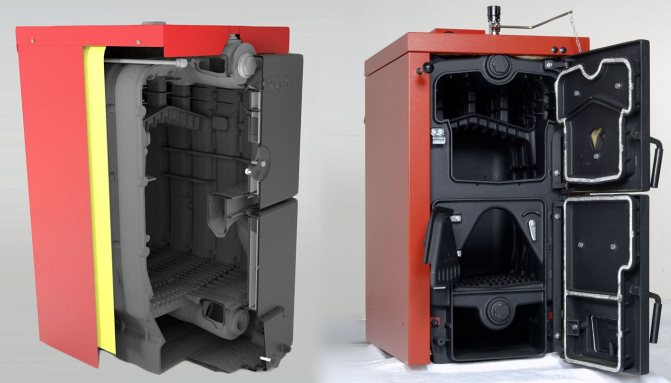

The Viadrus U22 combination model is an excellent example of the combination of a steel primary heat exchanger and a cast iron secondary heat exchanger.
Many manufacturers prefer to combine the strengths of both materials, therefore they produce boilers in a steel case, but with a cast iron firebox.
Single-circuit or double-circuit
The heat generated by the boiler is distributed depending on the number of circuits:
- single-circuit - designed exclusively for heating the room, connected to the system of batteries (radiators) and heats water only for them;
- double-circuit - is used not only for heating the house itself, but also for heating water for sanitary purposes, as well as for "warm floors".
reference... In an instantaneous heater for hot water supply, the heat output must be permanently regulated in accordance with the water flow rate.
Since the intensity of solid fuel combustion cannot be changed in real time (dynamically), only a boiler that receives heat energy from the combustion of gases, i.e., of a pyrolysis type, can be relatively profitable, and even then not always, given the difference in the price of coal for regions.
It is possible to organize a hot water supply system with one circuit. To do this, it is necessary to connect an indirect heating boiler, which will allow water to circulate not only through the pipes, but also to pass into the storage tank (through the built-in heat exchanger), heating the water in it.
Minimum required power and heated area
The most frequently used method of calculating the required power in a non-professional environment is the ratio of 100 W of heat per square meter of room area:
Q = S × 100
- where Q is the required thermal energy for heating the room (kW);
- S - heating area (m²), 100 - specific power, rate per unit area (W / m²).
For example, for a room with an area of 17.6 m² Q = 17.6 × 100 = 1760 W ≈ 1.8 kW
Usually the calculation is carried out in the direction "from small to large". Simply put, the value for each room is determined separately, and then the result is summed up. This allows you not only to find out the required power, but also to calculate the required number of radiators in the future.
One more nuance: the power is calculated for the most calorific coal that can be burned in the unit. When firing with other coal, such heat generation cannot be achieved, therefore it is recommended to make a power reserve of 10–20%, then the equipment will not work at its limit even in the most severe cold.
How and with what coal is it better to heat a household solid fuel boiler
Efficiency
The coefficient of performance (COP) shows the ratio of the volume of fuel consumed to the amount of useful heat generated by the unit.
This is the most important criterion for the performance of heating equipment, so it is obvious that the higher the efficiency, the better. For a coal-fired boiler, as mentioned above, the indicator varies within 65–92%, which depends on the design, type of combustion and the degree of automation of work processes.
Other important selection criteria
Having decided on the choice of the main parameters of the coal-fired boiler, you can pay attention to the additional characteristics of the unit of interest:
- smoke exhaust device - the degree of heat transfer from gases depends on the chimney elbows, therefore a three-way system is more effective than a one-way;
- combustion chamber volume - the larger the size of the furnace (calculated in l / kW), the less often you need to report fuel and the longer the battery life;
- management and functionality - boiler equipment can be equipped with a thermostat, weather-dependent automation, a self-cleaning system and a mobile GSM module;
- external thermal insulation - good insulation allows you to reduce the loss of useful energy, preventing sudden changes in temperature and cooling of the boiler;
- presence of lining - furnace chambers with lining are more economical, because they consume 25–45% less fuel at the same power level;
- security - to protect against overheating, an external heat exchanger or an independent cooling circuit and an emergency thermal valve are provided.
reference... The most common type of boiler breakdown is deformation (folding) of its walls. Contrary to popular belief, this is not due to high pressure (it is released through a safety blast valve), but due to banal overheating, since not all units have built-in protection.
Pyrolysis systems
Scientists have long noticed that when any solid fuel burns, carbon dioxide is released, which can be used as an additional fuel. This process is called pyrolysis. When firewood is burned, quite a lot of such gas is released. that's why wood-burning pyrolysis boilers are so widespread.
The principle of operation of such devices is quite simple. Fuel is placed in the first combustion chamber. With little air intake, the wood smolders and releases pyrolysis gas. which enters the second chamber. Here the gas is burned and heats the heating medium of the home heating system.
Such a device can significantly increase the efficiency of a wood-fired boiler. The efficiency of such devices reaches 90% or more. In addition, long-burning pyrolysis boilers have other advantages, namely:
- the fuel burns out almost completely. There is no need to constantly remove numerous combustion products;
- the operating time of the boiler increases on one tab. It is enough to "throw" firewood into the firebox once every 15 hours;
- fuel consumption is significantly reduced, which entails savings on heating the house;
- the devices are environmentally friendly. During the combustion of pyrolysis gas, no harmful substances are released into the atmosphere. When they burn, carbon dioxide and water vapor are obtained;
- it becomes possible to fully control the combustion temperature;
- long-burning pyrolysis wood-burning boilers are unpretentious in maintenance.
But, despite all its advantages, pyrolysis equipment is not without its disadvantages. Among them are the following:
- pyrolysis boilers are quite expensive equipment. For many families, it may simply not be affordable. But on the other hand, such devices will save money on heating the house, which compensates for the cost of purchasing equipment;
- boilers have a lot of weight and impressive dimensions, due to their complex structure;
- quite demanding on the quality of fuel. The firewood must be dry, the efficiency of the device depends on it;
- the need for a constant supply of electricity. The device includes blower fans that need electricity.
The high cost of long-burning pyrolysis heating boilers significantly reduces their popularity. But many craftsmen make such devices on their own. Diagrams and drawings can be easily found on the Internet.
What are solid fuel coal boilers
Solid fuel coal boiler is a modern heating unit, in which anthracite, coal, long-flame, gas, black, brown coal, pressed briquettes, and also some other types of solid fuel can be burned to obtain energy and then heat the coolant.
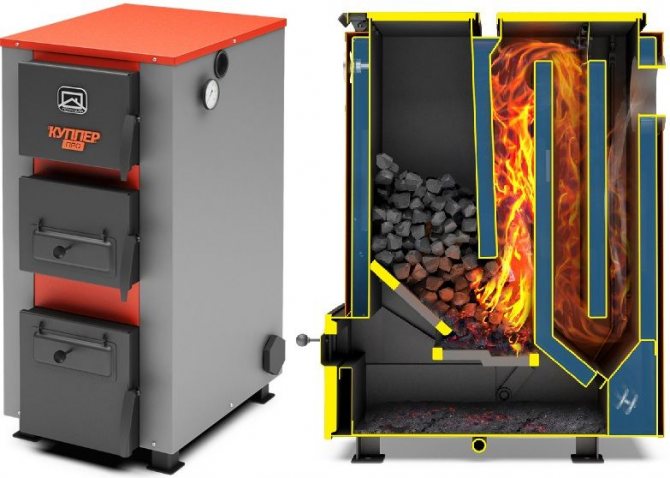

The modern coal-fired boiler Teplodar Kupper in section.
In fact, boilers of direct (bottom-up) combustion are the successors of the traditional Russian stove, but if a massive stone (brick) structure should be laid even at the preliminary stages of building a house, then a more compact device can be connected to an existing system.
Application and effectiveness
Coal-fired boilers are installed in residential and commercial buildings (summer cottages, cottages, offices) located in areas where connection to the gas supply system is problematic. It is ideal to use a coal boiler for heating a private house with an area of up to 100-150 m2.
Comparison of the efficiency of boilers using different types of fuel:
| Energy resource type | Calorific value, mJ (kW) / kg (m3) | Fuel price, rubles / ton (m3) | Efficiency | Cost of kW of energy, rub. |
| brown (w ≈ 20–40%) | 12,9 (3,6) | 2700–3200 | 70 % | 1,71–1,27 |
| stone (w 7-15%) | 27,1 (7,5) | 6000–7000 | 70 % | 1,14–1,34 |
| anthracite (w ≈ 1-3%) | 31,1 (8,7) | 8000–8500 | 70 % | 1,31–1,40 |
| natural gas | 36,5 (10,3) | 5400–5700 | 90 % | 0,63–0,65 |
| firewood (w ≈ 60-50%) | 8,1 (2,2) | 1300–1500 | 60 % | 0,98–1,05 |
| firewood (w ≈ 30–20%) | 11,2 (3,1) | 1500–1800 | 60 % | 0,76–0,83 |
| granules (pellets) | 17,2 (4,7) | 7000–9000 | 85 % | 1,75–2,25 |
| briquettes (euro wood) | 16,1 (4,3) | 6000–8500 | 85 % | 1,65–2,32 |
As you can see from the table, from a financial point of view, a coal boiler is far from the most economical option: it loses to gas and wood-burning units.
Compared to gas, which burns almost completely, coal leaves behind a lot of ash, which means that it has a lower combustion efficiency and part of the money spent on fuel will inevitably go to pay for "garbage waste", in the truest sense of the word.
The second closest competitor to coal is firewood. They are obviously cheaper, but not so convenient to use: in addition to the fact that they will have to be brought to the desired fraction (or buy chopped, but more expensive), you also need to throw firewood into the furnace every 3-5 hours, while coal burns for 6-10 hours.
Device and principle of operation
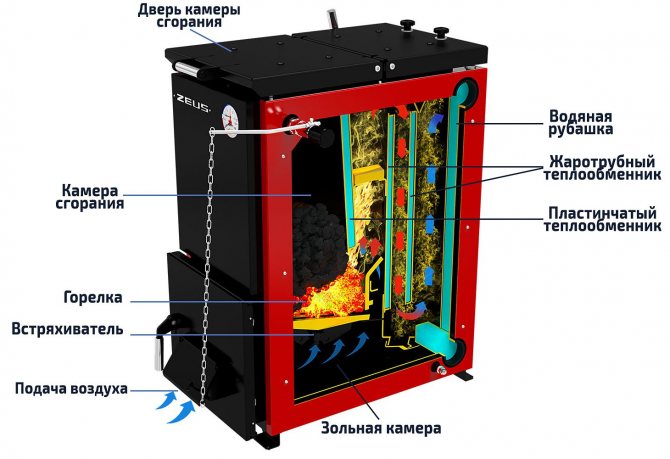

Schematic representation of the principle of operation of coal-fired boilers.
The fundamentally constructive device of a coal-fired boiler does not differ from any other solid-fuel unit, that is, it consists of the following units:
- outer capacious cylinder, which is also a body;
- a layer of insulating material covered with cladding panels;
- an inner cylinder located along the same axis (coaxial) with the first;
- combustion chamber (firebox), diverted to the lower part of the inner cylinder;
- a hole adjustable by the flap (blower) to create and enhance traction;
- variable system of air outlet and air supply pipes;
- compartment for collecting ash and instrumentation (optional).
reference... The inner and outer cylinders cannot adhere to each other: there must always be a free space (water jacket) between them for the coolant to pass through without hindrance. In this case, the size of this gap directly determines the amount of simultaneously heated water.
The principle of operation is extremely simple: due to the draft of the chimney, air enters the furnace, which causes coal combustion and the release of thermal gases. They, in turn, heating the inner walls, convert heat into hot steam or transfer it directly to the water circulating in the heat exchanger system.
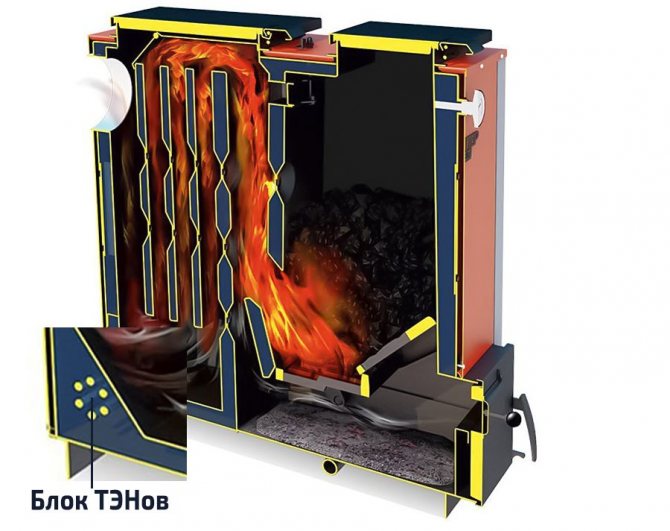

Some boilers, like TeplodarCupper Carbo 26, are equipped with heating elements for additional heating of the coolant.
The heated water supplies the pipes of the home heating system and / or hot water supply (DHW), and then, after going through a full cycle (circuit), it returns back to the boiler. Waste heat gases enter the chimney, where, due to their energy, the optimum temperature for creating draft is maintained.
Reviews of household coal-fired boilers: advantages and disadvantages
Coal boilers have been used for heating private houses for a very long time, therefore, thanks to many years of practice and feedback from the owners, they can be assessed as objectively as possible:
| Benefits | disadvantages |
| long working time - coal burns out slower than most other fuels (firewood - 2-2.5 times, pellets - 2.5-3 times) | high price - the price of even the most primitive coal-fired boilers is quite comparable to the price of gas units |
| uncomplicated design - a conventional boiler is quite simple, which guarantees protection against the occurrence of accidental breakdowns | allotment of utility room - the unit itself and fuel supplies must be located separately from living rooms |
| versatility - a coal boiler can burn any solid fuel, the only question is to reduce power (up to 20-40%) | constant control and management - boilers without electronics are started only manually and require supervision |
| independence from external factors - many models are completely autonomous (non-volatile) and do not need access to power grids | harm to the environment - coal dust and other particles of combustion products pollute the surrounding space |
Also, users note that over time, the pressure in the system drops, the heating goes slower and the fuel consumption increases per month. This should not be attributed to the disadvantages, since the problem arises due to the banal accumulation of scale, which can be encountered not only by coal, but by any water-heating boiler.
Specificity of installation work
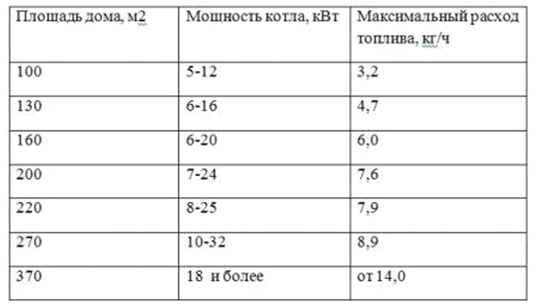

Boiler power depending on the area of the house
Installation of solid fuel boilers is carried out without the permission of supervisory services. Users will need to follow a few rules:
- It is better not to install the unit in a residential area - dust, soot and soot will be emitted. Installation is allowed in the corridor, bathroom, in the kitchen, in the bathroom.
- For models with a power of 60-150 kW based on SNiP 42-01-2002, a boiler room with a volume of 15 m3 and more and a ceiling height of 2.5 m is needed.
- Smoke removal and ventilation systems are organized without fail.
- Boilers with a capacity of up to 50 kW are placed on a screed, more than 50 kW - on an individual concrete foundation with a protrusion of 25 cm from the body.
- Ventilation is done in the form of an inlet opposite the boiler. A lattice hood is also required.
- The chimney is made of a pipe with a cross section of 150-200 mm2. It should not have bends, slopes.
- Obligation is performed using a bypass or a three-way valve set for a water temperature of 50-55 degrees.
- The optimal pressure parameter in the circuit is 1 bar.
The return and supply of the gravity line are fed directly to the boiler.
Types of solid fuel boilers
Currently, there are many types of different heating boilers and the fuel for them is completely different, but traditional fuels, such as coal and firewood are still the most common. When buying a modern boiler, many people are afraid that it is necessary to constantly monitor it and add fuel. This problem has been solved, special solid fuel boilers have been created that work for a long time without human intervention.
- The first type of boiler is called cast iron. It is designed to burn fuels such as coal and wood. Despite all its positive aspects, it is still dependent on humans and energy supply. Firewood in such a boiler burns, as a rule, no more than 5 hours, which means that the fuel must be constantly added.Currently, domestic and foreign manufacturers produce such boilers, some of them are called KChM and Solida.
- The second type differs in many respects from the first and is called pyrolysis heating boilers. There are two combustion chambers, one of which burns fuel immersed in the boiler, and the second burns out synthesis gas. The main fuel is wood. It surpasses a cast iron boiler in burning time, here it is 10 hours. One of the most successful boilers of this type is called Dakon, made in the Czech Republic.
- Pellet boilers, the name comes from the word pellets (granulated wood). It is she who needs to heat the room with the help of such boilers. It has a convenient additional advantage - self-sleeping the right amount of fuel using the auger and ignites it. Burning time in this case depends on the boiler model and the capacity of its hopper. But there is also a significant drawback - it is impossible to burn anything except wood pellets in such a boiler.
- The most modern and popular type is long-burning boilers. Firewood, sawdust, coal, peat can be used as fuel. They surpass their counterparts in burning time, with such a boiler, human intervention is not needed for 2 days or more thanks to the latest top-down combustion system, this allows the fuel not to burn, but to smolder for a long time.
Solid fuel boilers good alternative to gas. If you live in a country house or your street is not gasified, a long-burning boiler on coal, wood and other fuel will perfectly heat a room of any size.
How to choose a solid fuel boiler
When choosing a boiler, attention should be paid to the following criteria:
- boiler design;
- principle of operation;
- power;
- type of raw materials used;
First of all, you should pay special attention to power. This is one of the most important criteria and it is on it that the operation of the boiler depends, since not every model can cope with too large heating system of the house. It is necessary to clarify the power of the boiler with a specialist, he will compare such criteria as the area of the house, the climatic region and even the height of the ceilings. The approximate required power can be calculated independently based on the following rule: 1 kW of power is needed for 10 square meters.
An error in the choice of the boiler power can have a bad effect on quality of heating. With less heating, the room will be cold, and with a greater degree, the equipment may fail.
Boiler installation location
The ideal place for a boiler is an easily accessible separate room. The best option is a separate room in the house. This will make loading fuel easy and enjoyable. In the winter season, the desire to leave the house in a separate boiler room, as a rule, disappears immediately.
Three important rules in choosing a place for installing a boiler:
- Ventilated room.If additional gas is used as fuel, a small leak is possible. If the installation is done correctly, there is no need to be afraid of leaks, but in the case of their long-term accumulation, the likelihood of poisoning is high.
- Deep cellar.Not the easiest option for installing a boiler, but still, if the house has the ability to install it at a depth of 2 - 3 meters from the heating radiator, it will be ideal. Thanks to such an installation, additional circulation is not needed, you can not use circulation pumps, if the installation option is only in the house, circulation is mandatory, if it is absent or improperly installed, carbon monoxide leakage is possible, it is impossible to determine its presence in a room without special devices, and poisoning with it easily.
- Chimney.It is important to provide the right traction. In case of an error in these calculations, it is possible to reduce the power of the boiler and the ingress of combustion products into the room. A specialist should install the chimney, since it is easy to make a mistake in this difficult matter and lose heat.
Subject to all the rules, a solid fuel boiler will work properly long years.
To remove contaminants from heating systems, a smoke exhauster must be installed. Details:

